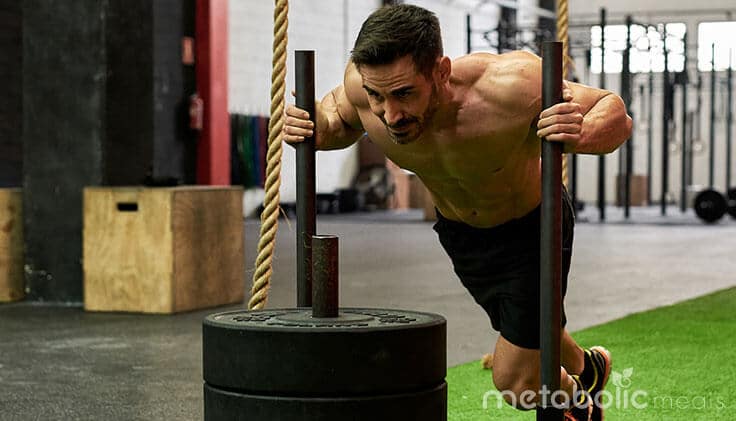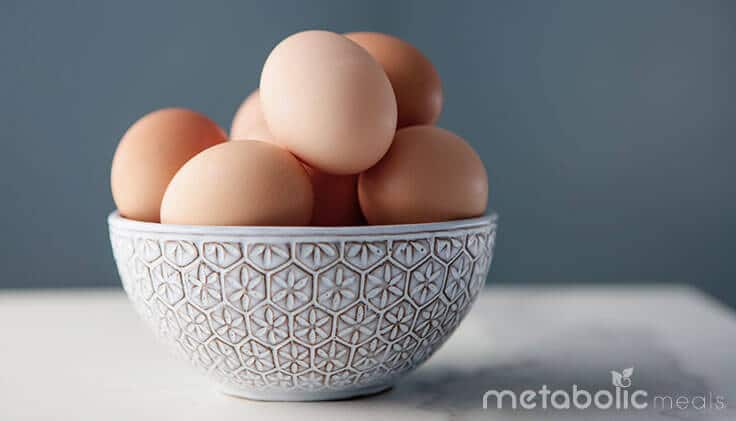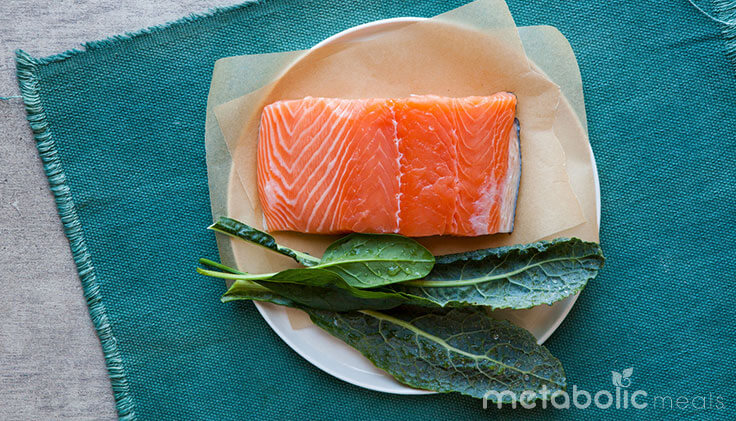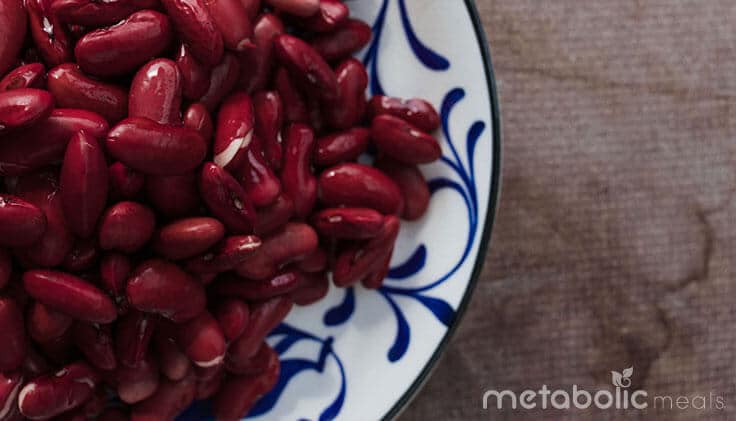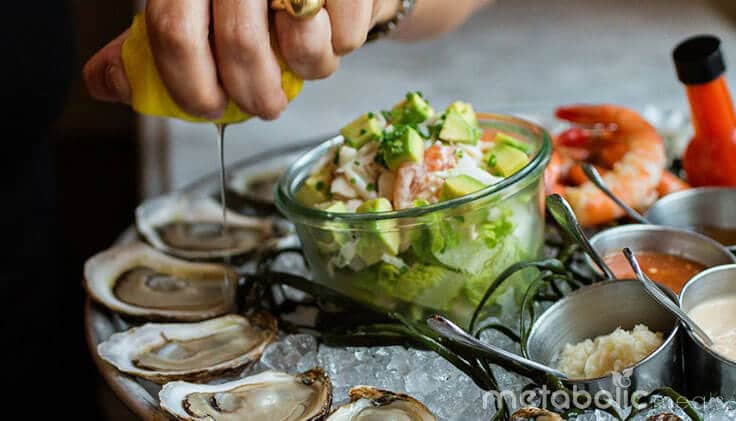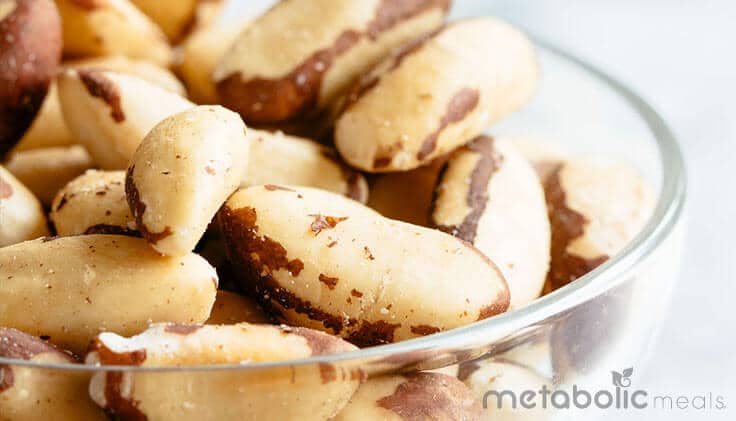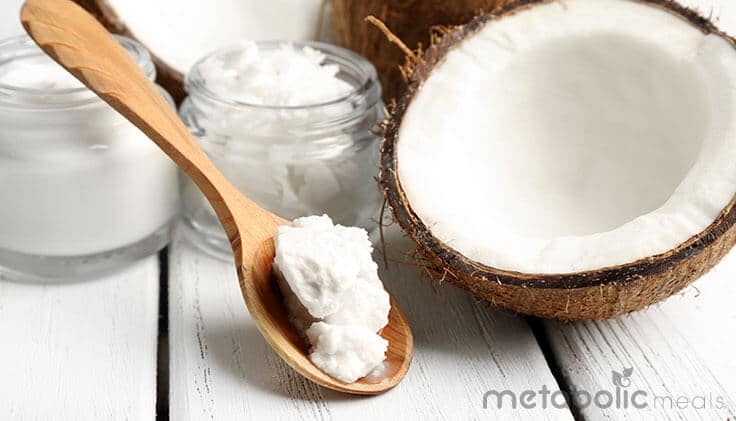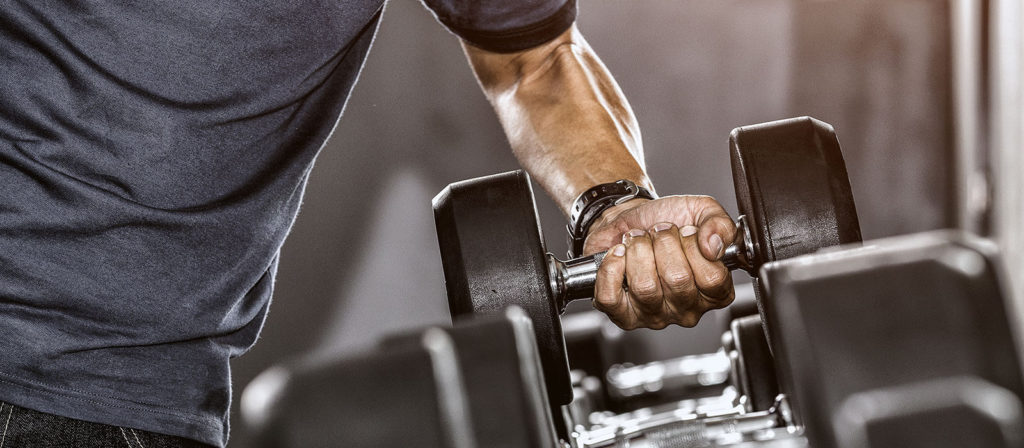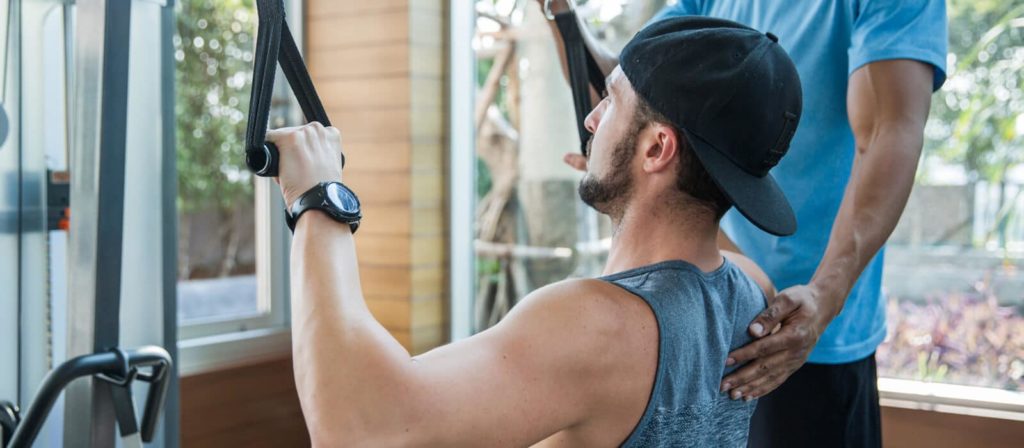Packing on muscle mass is a simple — but not necessarily easy — process. Entire textbooks, websites, podcasts, and television shows are dedicated to the intricacies of enhancing body composition, but gaining muscle mass is ultimately about prioritizing and optimizing three important details: training hard, recovering properly, and making the right food choices.
When it comes to making the right food choices, the most important concept to remember is that food is information that starts a cascade of hormonal responses within your body. The key to getting the best results and packing on the most muscle mass is understanding which foods send the best signals to enhance muscle protein synthesis, optimize hormonal response, and commence recovery.
Steps to Building Muscle Mass
The first — and most important — step in building muscle mass is achieving a positive muscle protein balance. Muscle protein synthesis is the process of rebuilding muscle tissue. Diet and exercise play vital roles in muscle development, and it is critical that muscle protein synthesis be greater than muscle protein breakdown for growth to occur. This is where diet becomes especially crucial. Amino acids are the building blocks of protein and must be present to regulate muscle tissue repair. During intense training, consumption of 1 to 2 grams of protein per pound of bodyweight is a recommended starting point for optimizing muscle growth.
Another important piece of the puzzle is optimizing your hormonal profile. The human body is great at a principle known as “specific adaptation to an imposed demand.” In practice, consider this example: During weight training, muscle fibers break down from the stress of the exercise. If the repair to that breakdown exceeds the damage itself, hypertrophy, or muscle growth, occurs.
This is an important concept to understand because if you go to the gym with the goal of building muscle without pushing yourself hard enough to produce the tissue damage necessary to elicit a growth response, you’ll be out of luck. Remember that muscle tissue breakdown isn’t a bad thing as long as you’re recovering enough to grow from it.
That said, what the body isn’t good at is adapting to an imposed demand while androgen levels are chronically low, stress levels are chronically high, and nutrient deficiencies are present. To pack on muscle, the body must be in an anabolic state.
Food That Fosters an Anabolic State
There are two main types of metabolic reactions to exercise: anabolism and catabolism. Catabolism is the state of breaking down, and anabolism is the state of building up. The quickest way to sabotage your hard work in the gym is to be in a constant state of catabolism to the point where your body can’t adapt to your training.
Making the right nutritional choices is key to fostering an anabolic state. Consuming nutrient-dense food and ingesting adequate proteins are both essential. Here are 10 foods that will best complement your training regimen and help you pack on the most muscle mass:
1. Pasture-Raised Eggs
Eggs are among the most nutritious foods in the world and should be a staple in any muscle-building diet. Egg whites are extremely dense in protein, and the yolk is packed with healthy fats, vitamins, and minerals. In recent years, some have warned of the possible dangers of eggs’ high cholesterol content, but it’s important to remember that dietary cholesterol has minimal effects on cholesterol levels in the blood. In fact, studies show that consuming eggs can actually improve your cholesterol profile. Pasture-raised eggs are the healthiest and most humane egg sources, and they carry a greater amount of omega-3 fatty acids than their conventional cage-raised alternatives.
2. Pacific Salmon
Wild-caught Pacific salmon is a great source of protein and rich in omega-3 fatty acids. Omega-3s are great at reducing inflammation and improving insulin sensitivity. Fish oil also enhances anabolic response to amino acids. Wild-caught Pacific salmon is a lower-calorie option than farm-raised salmon, which is significantly higher in omega-6 fatty acids and saturated fats. Farm-raised fish also contain higher levels of contaminants than their wild counterparts.
3. Grass-Fed Beef
Grass-fed beef is an excellent source of protein and contains more omega-3 fatty acids than grain-fed alternatives. The American Journal of Clinical Nutrition published a study linking the consumption of red meat and resistance training to significant increases in muscle mass and strength gains. If you’re looking to lean out while adding muscle mass, it is important to select leaner cuts of beef. Five ounces of 70 percent lean beef contains 471 calories, whereas 5 ounces of 95 percent lean beef contains only 193 calories.
4.Wild-Caught Shrimp
Shrimp is rich in protein and relatively low in calories. More importantly, shrimp is packed with iodine, a nutrient found in every organ and tissue in your body. Iodine deficiency might affect up to 74 percent of adults, and the farther you live from the ocean, the less iodine is likely found in your diet. Athletes are especially at risk due to the sweating out of iodine during exercise. Iodine is essential for optimal thyroid function, a key indicator in metabolism. Twelve ounces of shrimp contains nearly the entire recommended daily iodine intake.
5. Kidney Beans
Kidney beans contain high-quality protein, carbohydrates, fiber, healthy fats, vitamins, and minerals. They are especially beneficial for “hard gainers” because of their high caloric content. Beans should be a staple of any diet because of their health benefits, but kidney beans in particular have shown promising results in animal studies. Dating back to the early 1990s, studies have found that rats consuming diets containing kidney beans had lower body fat and higher muscle mass than the control rats. More importantly, studies on human subjects have also shown improvements in blood sugar control and body composition progress.
6. Oysters
Oysters are known as an aphrodisiac for a reason. Oysters contain the highest concentrations of zinc in the animal kingdom, with just six oysters containing nearly 300 percent of your daily recommended intake of zinc. Cellular zinc concentration plays an important role in modulating serum testosterone levels, and zinc deficiency is one of the quickest ways to derail progress in the gym.
7. Brazil Nuts
Nuts are an excellent source of healthy fats, protein, and fiber. When it comes to selecting the best nuts for packing on the most muscle mass, Brazil nuts are an excellent option because of their selenium content. Selenium is a mineral best known for its antioxidant properties, but studies also support its androgen-enhancing benefits as well as improvements in immune system function. To stay healthy, decrease inflammation and pack on mass, include Brazil nuts multiple times a week.
8. Grass-Fed Butter
When choosing butter, don’t be cheap — you get what you pay for. Grass-fed butter is superior because of its higher conjugated linolenic acid and lower omega-6 profile compared with alternatives. Studies have shown that diets rich in CLA improve muscle growth and increase fat loss compared with placebo groups.
9. Coconut Oil
Coconut oil is a better option for cooking than other vegetable oil alternatives that are loaded with omega-6 fatty acids and polyunsaturated fats that break down under high heat. This releases free radicals that cause inflammation within the body. Because coconut oil is relatively high in stable saturated fats, cooking with it is not an issue. Coconut oil contains medium-chain triglycerides, and MCTs have been shown to improve metabolism. It is important to remember that coconut oil is very calorically dense, so you should consume it in moderation.
10. Whey Protein
No. 10 on the list is the most important when it comes to post-training nutrition. While I am a huge advocate of a whole-foods-first approach, it would be foolish to exclude a supplement as important as whey from this list. Liquid proteins are superior to whole food proteins immediately after a workout because they carry a better rate of absorption and superior amino acid profile consisting of high concentrations of leucine. Leucine acts as an “on switch” for muscle growth by triggering muscle protein synthesis. Additionally, whey protein elicits an acute insulin response, which helps lower cortisol levels. The body cannot switch to an anabolic state when cortisol levels are high.
Make these 10 foods regular parts of your diet, and you’ll be one step closer to gaining the muscle mass you need in order to reach your training goals.
Alan Bishop is the Director of Sports Performance for Men’s Basketball at the University of Houston. Alan has a master’s degree in Sports Conditioning and Performance and holds certifications through the NSCA, CSCCA, and USAW.

